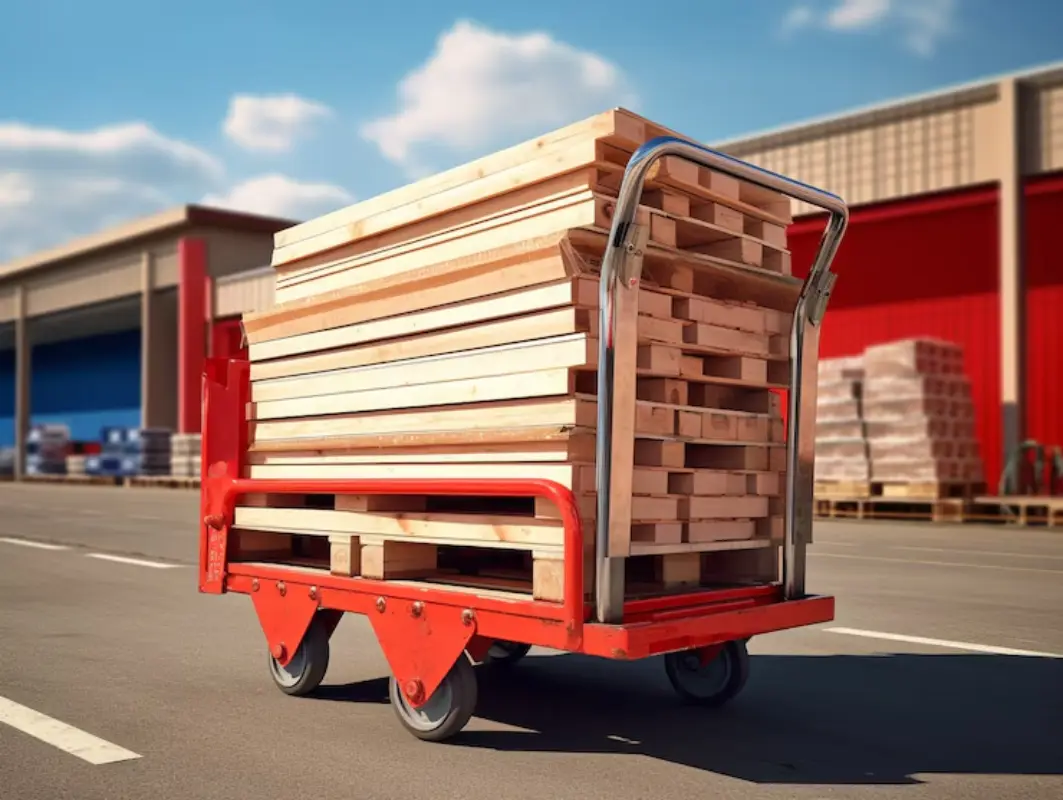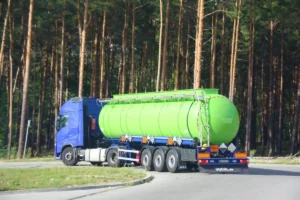In large-scale warehouses, manufacturing plants, and bustling distribution centers, the ability to move goods swiftly and safely is a cornerstone of operational success. When workers are required to transport oversized or heavy objects by hand, the risks increase significantly—not just for injuries but also for costly delays and product damage. According to the U.S. Bureau of Labor Statistics, musculoskeletal disorders from improper lifting and repetitive manual material handling account for nearly one-third of total workplace injuries each year. These injuries can result in lost productivity, increased sick days, and higher healthcare costs.
For this reason, many organizations are prioritizing equipment and processes that take the physical strain off their teams. Advances in heavy-duty material handling carts ensure that even the most significant or most awkward loads are moved more safely and much faster than before. Companies that invest in the right equipment can expect not only fewer workplace injuries but also streamlined operations, where staff spend more time on value-added tasks and less on manual labor.
Contents
- 1 What Defines a Heavy-Duty Material Handling Cart?
- 2 Benefits of Heavy-Duty Carts in Modern Workplaces
- 3 Real-World Examples from Major Industries
- 4 Features That Enhance Workflow Efficiency
- 5 Choosing the Right Cart for the Task
- 6 Supporting Data and Trends Shaping the Industry
- 7 Tips for Integrating Heavy-Duty Carts Into Everyday Operations
- 8 Looking Forward: The Role of Material Handling Carts in Future Logistics
What Defines a Heavy-Duty Material Handling Cart?
Unlike standard pushcarts or dollies, heavy duty material handling carts are engineered to withstand demanding environments and move substantial loads with ease. These carts are constructed from robust materials such as reinforced steel or industrial-grade aluminum, which provide longevity and the strength needed for heavy use. Welded frames, extra-thick platforms, and high-capacity axles enable them to handle weights well over the typical service cart. It’s not uncommon for a heavy-duty cart to have a load capacity upwards of a thousand pounds—far more than most standard mobile equipment can manage.
Enhanced features set these carts apart, including oversized wheels designed to roll smoothly over rough flooring, ergonomic handles that reduce wrist and shoulder strain, and non-slip platforms that securely hold awkwardly shaped or stacked items in environments where carts are in constant motion, easy maneuverability and stability become critical, ensuring product safety and minimizing tipping hazards during transit. The difference these technical improvements make is tangible, not just in terms of efficiency but also in morale and safety.
Benefits of Heavy-Duty Carts in Modern Workplaces
Heavy-duty material handling carts have become essential tools for businesses looking to minimize risk and maximize workflow. Their use translates directly to fewer injuries among staff, as the carts absorb the weight and awkwardness of large loads. Instead of struggling with heavy lifting, employees have a reliable tool that supports better posture and more natural movement.
- Reduced Downtime: With fewer injuries and a smoother flow of goods, teams experience less disruption, allowing production or order fulfillment to stay consistent and timely.
- Operational Efficiency: By enabling staff to move larger quantities in a single trip, heavy-duty carts free up labor for other vital tasks, supporting rapid order processing and reducing congestion during peak times. As highlighted in this article by USA Wire, these carts not only improve workflow efficiency but also contribute to a safer and more organized workplace. Their durability and ergonomic design make them essential tools for streamlining operations in demanding environments.
- Long-Term Cost Savings: Over time, investments in safe, durable material handling equipment lead to less wear on both personnel and facility infrastructure. Organizations spend less on equipment replacement and medical claims.
These benefits compound over time, fostering a safer and more efficient workplace where employees know their well-being is a company priority.
Real-World Examples from Major Industries
The versatility of heavy-duty material handling carts makes them indispensable across various industries. In automotive manufacturing, for example, bulky engine blocks and transmissions are transported between assembly lines with minimal risk, ensuring that critical workflows remain uninterrupted. Extensive manufacturing facilities often rely on carts to shuttle raw materials to production areas and finished goods to storage or packaging, streamlining every link in the chain.
Distribution centers and logistics hubs also benefit from these carts, particularly as e-commerce and same-day shipping expectations continue to rise. Companies that adopt robust material handling solutions report smoother operations and enhanced responsiveness to customer demands. As highlighted in a recent report on warehouse automation growth, reliable material handling equipment plays a crucial role in enabling automation and resilience against labor shortages—a growing concern in today’s market.
Hospitals, airports, and large retail environments similarly utilize heavy-duty carts to transport a wide range of items, from equipment to inventory, thereby enhancing both convenience and safety in dynamic, high-traffic settings.
Features That Enhance Workflow Efficiency
Heavy-duty material handling carts aren’t just about brute strength—they’re increasingly designed for versatility, user comfort, and adaptability. Features like adjustable ergonomic handles help users of different heights work comfortably, while lockable casters provide stability during loading or on inclined floors. Large-diameter wheels made from rubber or polyurethane allow carts to glide over thresholds, docks, and even outdoor surfaces, preventing frustrating delays or accidents.
Additional features, such as modular shelving or expandable decks, let operations configure each cart to fit specific load types. Non-slip surfaces, edge guards, and protective bumpers safeguard goods against drops or collisions. Powder-coated steel frames not only resist corrosion from warehouse humidity but are also easy to clean—an advantage for sectors with strict hygiene regulations.
- Height-adjustable handles for reduced wrist and shoulder fatigue
- Swappable racks or bins for shifting workflow demands
- Protective finishes and durable hardware for longevity
Choosing carts with these enhancements means improved process flexibility and a safer, more productive workplace overall.
Choosing the Right Cart for the Task
Organizations need to select carts that are not only suited to the weight capacity required but also to the dimensions of the materials and the unique features of their facility. Ask: Are most loads oversized, unusually shaped, or delicate? Do carts need to navigate narrow aisles, elevators, or ramps? Factoring in frequency and type of use will help avoid purchasing equipment that is overbuilt or, worse, inadequate for the job.
- Analyze the most common loads, considering their weight, shape, and volume
- Measure spaces where carts will be used, including aisle and doorway width
- Assess whether modular or fixed shelving is needed based on load diversity
- Look for carts with safety features appropriate to the environment, such as edge lips and foot brakes
Involving staff who use the equipment daily in the decision-making process often results in better outcomes and higher satisfaction with the chosen carts.
Supporting Data and Trends Shaping the Industry
The material handling industry is rapidly evolving, driven by new technologies and a growing interest in workplace safety. According to OSHA workplace safety resources, routine inspection and proactive equipment maintenance are crucial for minimizing risk and ensuring continuous operation. Regular safety audits and feedback loops ensure that employees are protected and processes run smoothly.
Market analysts predict sustained growth for material handling equipment, primarily driven by the surge in e-commerce and increased demand for faster and more accurate delivery. Industry trends also indicate a shift toward greater customization, increased durability, and integrated innovative features that enable companies to track usage and performance data more easily.
Tips for Integrating Heavy-Duty Carts Into Everyday Operations
- Comprehensive Employee Training: Ensure all staff know safe loading techniques, how to operate the carts, and how to respond to emergencies or equipment malfunctions.
- Preventive Maintenance Schedules: Routine checks of wheels, brakes, handles, and shelving can detect wear and tear before it causes downtime.
- Open Feedback Channels: Encourage teams to report issues or suggest improvements. Seasonal or workload changes may require adjustments in how carts are used or maintained.
- Continuous Process Review: As the workflow evolves, regularly assess whether the current equipment still serves the needs effectively, adjusting or upgrading as necessary.
Focusing on these best practices helps build a culture of safety and efficiency, extending the life of carts and ensuring ongoing value for the business.
Looking Forward: The Role of Material Handling Carts in Future Logistics
The future of logistics is looking increasingly high-tech and sustainable, and heavy-duty material handling carts are no exception. Many models are moving toward integration with IoT sensors and innovative inventory systems, enabling real-time asset tracking, improved workflow planning, and predictive maintenance. This data-driven approach provides companies with timely insights into their daily operations, helping to reduce bottlenecks and losses further.
Sustainability is also gaining momentum, with manufacturers now prioritizing the use of recyclable materials and implementing energy-efficient production methods. As industry needs change, the adaptability and resilience of heavy-duty material handling carts will keep them central to logistics and supply chain success, ensuring employees stay safe and organizations remain competitive for years to come.



